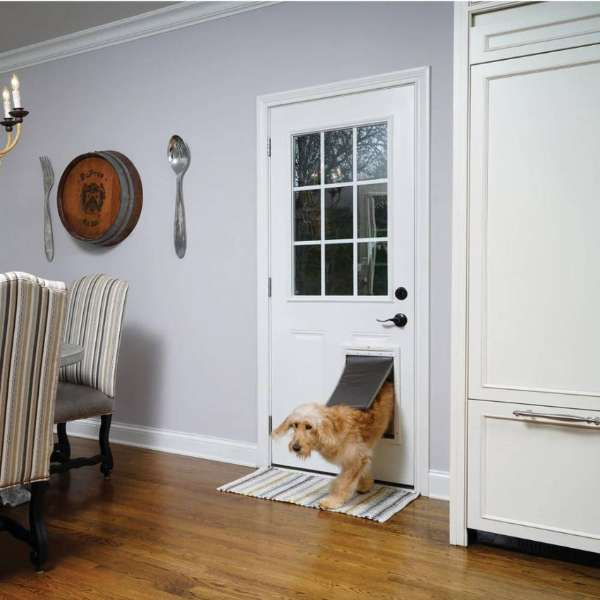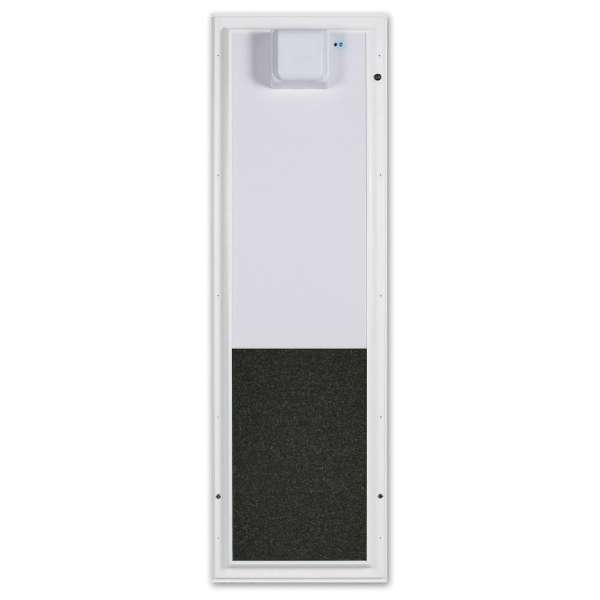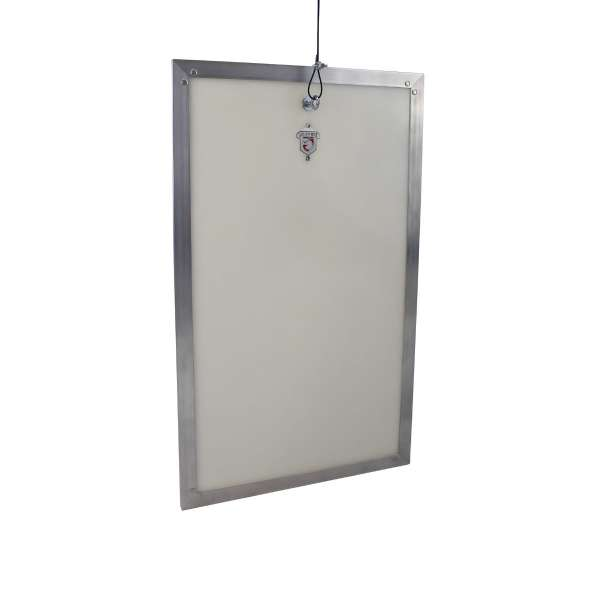737-215-3211

What Are the Best Types Dog Doors: 7 Common Mistakes
It’s a rainy Sunday afternoon, and you’re curled up with a good book and a cup of tea. Just as you get to the most exciting part, your dog starts scratching at the door, needing to go out. You reluctantly put your book down, get up, and let them out, only to have them back scratching to come in five minutes later.
Frustrating, right?
We've all been there.
Installing a dog door seems like the perfect solution.
But here's the catch: not all pet doors are created equal. Choosing the wrong one can lead to a whole new set of headaches.
This is where we come in.
Let's navigate the maze of dog door options, avoid the common pitfalls, and find the perfect fit for you and your furry friend.
Whether you're a first-time dog owner or looking to upgrade your current setup, by the end, you'll know how to choose the best dog door and make life a little easier for you and your pet.
Mistake #1: Choosing the wrong size
Getting the size of your pet door right is crucial.
A door that's too small can be uncomfortable and might even deter your dog from using it. And if it's too large, the doggie door can be a security risk, potentially letting in unwanted guests.
You need to measure your dog accurately. Here’s how to do it:
-
Height: Measure from the top of your dog’s shoulders (also known as the withers) to the bottom of their chest or belly.
-
Width: Measure the widest part of your dog, usually across the shoulders or hips, depending on their build.
-
Clearance: Make sure to measure the height from the ground to the bottom of your dog’s chest. This will help determine the right height for installing the door, so your dog doesn’t have to jump awkwardly.
A common mistake many pet owners make is guessing the size or assuming their dog won't grow much more. This is especially problematic with puppies. They grow faster than you think, and a pet door that fits now might be too small in just a few months.
Always consider the adult size of your puppy’s breed when choosing a door.
Mistake #2: Ignoring your home's climate
If you live in a colder region, an insulated pet door is a must.
These doggie doors are known for their energy efficiency and are designed to keep the cold out and the warmth in. Without insulation, you'll not only face higher heating bills but also a chilly home.
Non-insulated pet doors can let in drafts, making your living space less cozy and forcing your heating system to work overtime.
In hotter areas, the sun can be brutal. UV-resistant pet doors are your best bet here. These doors prevent the intense heat from entering your home, keeping it cooler. Plus, they can withstand the sun's rays without warping or becoming brittle.
If you install a regular door in such climates, it can lead to warping, reducing the door's lifespan and efficiency.
So, what should you look for?
-
Insulated Doors: If you’re in a colder region, look for doors with good insulation like Security Boss SB72W Wall Mount Insulating Dog Door. Some even come with double flaps or magnetic seals to keep the cold out.
-
UV-Resistant Doors: For hot climates, choose doors made from durable, UV-resistant materials. These will last longer and keep your home cooler.
-
All-Weather Doors: If your area experiences both extremes, consider all-weather doors. These are designed to handle both cold winters and hot summers.
Mistake #3: Overlooking security
A poorly secured pet door can invite more than just your pet into the house. The last thing you want is an easy entry point for intruders or even neighborhood critters.
Let’s talk about what makes a dog door secure.
-
Locking Mechanisms: Basic dog doors come with simple locks like Watchdog Security Pet Doors Cover, but advanced options offer multiple locking points. Look for doors that allow you to lock them from both inside and outside.
-
Electronic Controls: High-tech dog doors can be a game-changer. These electronic dog doors use your pet’s microchip or a special collar key to unlock only for them like PetSafe Electronic Lockable Patio Dog Door.
-
Sensor Systems: Some dog doors come with sensors that detect your pet’s presence. These systems can open the door when your dog approaches and close it securely after they pass through.
Mistake #4: Neglecting Installation Compatibility
Installing a dog door might seem straightforward, but improper installation can lead to problems.
One common mistake is jumping into a DIY installation without the proper tools or instructions.
Sure, it might look simple enough on YouTube, but each dog door and home setup is different. Missteps can lead to a poorly fitting door that’s not secure or efficient.
Step-by-Step Guide to Installing a Dog Door:
-
Read the Instructions: Start by thoroughly reading the manufacturer’s instructions. It sounds obvious, but skipping this step is where many go wrong.
-
Gather the Right Tools: Ensure you have all the necessary tools before you start. This might include a jigsaw, drill, measuring tape, and level.
-
Measure Twice, Cut Once: Carefully measure the placement of the dog door. Double-check your measurements to avoid cutting too large or too small an opening.
-
Mark the Outline: Use a pencil to mark where you’ll cut. This helps ensure a precise fit.
-
Cut the Opening: Follow the outline with your jigsaw. Take your time to make sure the edges are clean and straight.
-
Install the Frame: Place the dog door frame into the opening. Check that it fits snugly before securing it with screws.
-
Seal the Edges: Use weatherproofing materials to seal around the edges of the door. This prevents drafts and water leaks.
-
Test the Door: Make sure the door swings or slides smoothly. Adjust as needed to ensure it works perfectly for your dog.
For more detailed installation instructions, visit How To Install Dog Doors In A Door.
If you're not comfortable installing a pet door in a sliding glass door, existing door, or screen door, it's best to call a professional. They can make sure the door is installed correctly and safely, saving you time and potential headaches.
Mistake #5: Skimping on quality
The materials used in your dog door play a crucial role in its durability, security, and overall performance.
Let's break down the common materials and their pros and cons.
-
Plastic dog doors are lightweight and often the most affordable option. They’re easy to install and come in various sizes. However, they can wear out quickly, especially if your dog uses the pet door frequently. They’re also more prone to damage from chewing or scratching.
-
Aluminum dog doors like Security Boss MaxSeal PRO High-Grade Aluminum Dog Door are more durable than plastic ones. They can withstand frequent use and are often more secure. They’re also resistant to chewing and scratching. However, they can be more expensive and might require professional installation especially in sliding glass doors or on an exterior wall. Despite the higher cost, aluminum pet doors offer durability and security that make them worth considering, especially for larger or more active dogs.
-
Vinyl dog doors offer a balance between durability and flexibility. They’re resistant to weather and can handle regular use. Vinyl is also a good insulator, making this pet door a solid choice for both hot and cold climates. However, vinyl doors can be more costly than plastic but are generally less expensive than aluminum.
While saving money upfront can be tempting, low-quality materials often lead to higher costs in the long run due to frequent replacements and repairs.
For high-traffic areas, aluminum doggie doors are the best choice due to their durability and resistance to damage. For moderate use, vinyl doors strike a good balance between cost and durability, offering weather resistance and insulation. If budget is a concern, look for higher-quality plastic doors with reinforced edges to increase their lifespan
Mistake #6: Not considering the dog's age and mobility
Puppies grow quickly, so a pet door that fits them now might be too small in a few months. Choosing the best dog doors that accommodate their future size saves you the trouble of upgrading later. Also, make sure the door is easy for them to use, with no sharp edges or heavy flaps that could be difficult to push.
As dogs age, they may develop joint issues or arthritis, making it hard for them to jump or push through a heavy door. Look for doors with lower step-over heights. So that your beloved furry friends don’t have to lift their legs too high to get through. Wide openings are also beneficial, allowing them to move through comfortably without squeezing.
If your dog has hip dysplasia, arthritis, or any other condition that affects their movement, you'll dog doors safe and easy to navigate. Features like gentle magnetic closures, lightweight flaps, and no-step entry can make a big difference.
Mistake #7: Forgetting to train your dog
Without proper training, even the best dog door can turn into a source of frustration.
First off, it’s important to approach training with patience. Your dog needs to feel safe and confident using the pet door, and that takes time and positive experiences. Dogs need time to get used to new things, and trying to force them through the door quickly can make them scared of it. Scolding or punishing your dog for not using the door can create a negative association. Instead, focus on positive reinforcement.
Start by letting your dog explore the doggy door while it’s propped open. Use treats and praise to make it a positive experience. Then, stand on the other side of the door and call your dog through, using their favorite treats or toys as incentives. Be patient and encouraging.
Once your dog is comfortable going through the open door, start closing it slightly. Encourage them to push it open with their nose or paws, rewarding them every time they succeed. Consistency is key, so practice several times a day, but keep sessions short and fun to avoid frustration.
Positive reinforcement techniques such as treats and praise are essential. Always reward your dog with treats and enthusiastic praise when they use the door correctly.
Finding the Best Dog Door for Your Home
Choosing the right dog door for your home can make life easier for both you and your furry friend. We listed the mistakes you must avoid to have a smooth, hassle-free experience.
Remember, taking the time to pick the right pet door and install it properly can save you from future headaches.
To learn more about dog ownership and puppy product advice, go to our blogs.






Leave a comment